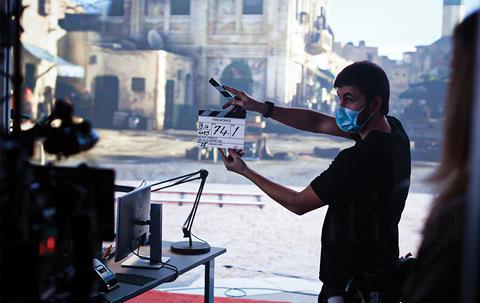The studio includes a preconfigured curved LED stage for shooting in-camera VFX.

80six has enhanced its virtual production studios in Slough, which includes a preconfigured LED stage for shooting in-camera VFX.
After 20 months of R&D with LED and cameras for film and TV productions with trusted partners such as Epic Games, Dimension Studio, DNEG & OSF, the roughly 335m2 studios are now open for business.
The virtual production stage includes an 18m x 4.5m high-resolution LED volume, built with ROE Visual Diamond DM 2.6mm for the rear wall and ROE Carbon 5.7mm for the LED ceiling, along with movable lighting dollies. The ROE screens run on Brompton Technology’s Tessera SX40 4K Version 3.1 LED processors.
Jack James, director at 80six, said: “Throughout the last couple of years, we have carried out various tests that have given us a solid understanding of the principles of VP. We can now confidently advise our clients as to the benefits and limitations they can expect when shooting in-camera VFX or when using LED video panels as light sources.”
He added on the tech involved: “We were involved in an indie film shoot with DNEG, a multiple Oscar, BAFTA and Emmy award-winning visual effects and animation company, and Dimension studio, where it was necessary to calibrate our ROE Diamond 2.6mm for HDR. We used Brompton’s Hydra calibration system, enabling the panels to produce true-to-life colours that were required for the photorealistic background content, and got outstanding results.
“The request for HDR was the result of several months of testing involving colour scientists and VFX teams. The majority of our LED inventory is armed with Brompton R2 cards, enabling us to recalibrate them using Hydra whenever necessary.”
“Brompton’s Frame Remapping is another interesting concept we are looking forward to exploring as it means you can now have multiple cameras shooting the same physical screen, but with different layers of content represented on each individual frame for each camera.
“As a filmmaker, this means you are no longer limited to a particular shot; you can effectively have two scenes running at the same time, or a green screen frame as the second scene that you can then use for keying. This gives filmmakers the flexibility to edit in post-production.”





























No comments yet